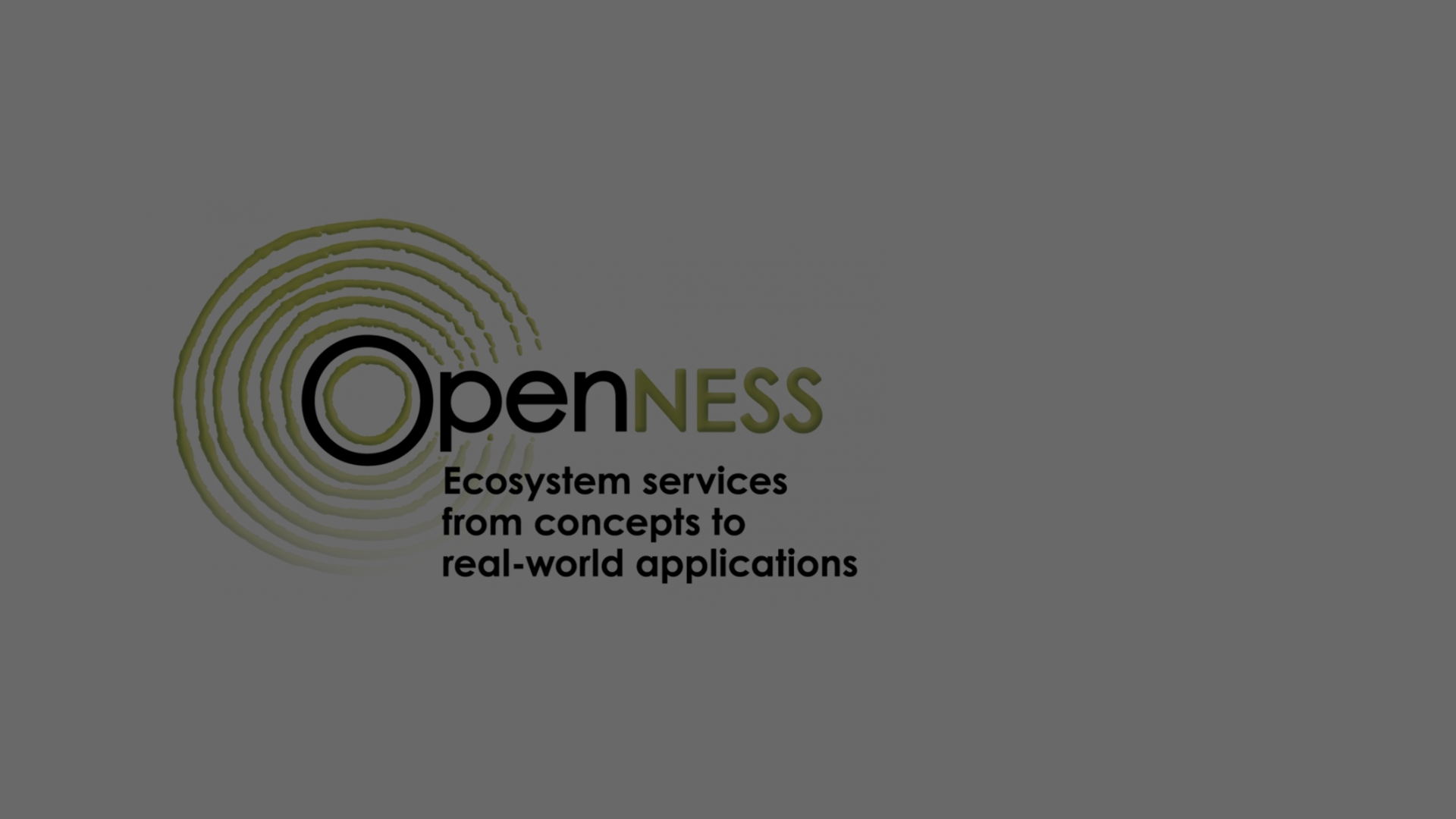Project coordinator from INCDS:

Senior researcher I Dr. Ovidiu Badea
The overall objective
The OpenNESS project (http://www.openness-project.eu) aims to integrate the concepts of Natural Capital (CN) and Ecosystem Services (SE) into operational frameworks that provide tested, practical and adjusted solutions for including SE in land management, water and waste, as well as for the decision-making process. It examines how these concepts relate to and support the European Union’s economic, social and environmental initiatives and policies, and explores the potential and limitations of the SE and CN concepts.
Thus, the overall objective of the project was to translate the concepts of ecosystem services and natural capital into operational frameworks that provide tested, practical and adapted solutions to inform the sustainable management of land, water and cities in different locations and for different scales.
The specific objectives
1. Improve conceptual understanding of ES and CN and provide operational frameworks for applying the concepts to real management and decision-making situations.
2. To examine how existing and future EU regulatory frameworks can enhance or restore the benefits derived from ES and CN, using multi-scale scenario approaches.
3. To develop and refine ES biophysical control mapping and modeling approaches that can be used to assess the effectiveness of mechanisms, tools and best management practices to sustain ES provision in the face of multiple and uncertain factors, preserving biodiversity at the same time.
4. Developing hybrid methodologies that address trade-offs, synergies and conflicting interests and values in ES use through a combination of monetary, non-monetary and deliberative methods within multi-criteria and Bayesian decision support approaches.
5. To apply the concepts and methods developed and refined in the project to concrete, place-based case studies in a range of socio-ecological systems with stakeholders and to analyze the implications of decisions made at local, regional and European levels on flows and ES use in other parts of the world.
6. To translate the results into policy recommendations and integrate the results into a menu of multi-scale solutions and associated data sets that are available to ES users and managers, as well as decision makers.
7. To disseminate the results using advanced information and communication technologies to reach a wide audience and to promote and maintain a scientific and policy dialogue on the use of ES and CN concepts in the sustainable management of land, water and urban areas.
Project activities:
Activity 1.1: Identify key challenges and conceptual frameworks (WP1)
Activity 1.2: Identifying key stakeholders and their needs (WP1)
Activity 1.3: Developing a common language and understanding (WP1)
Activity 1.4: Developing a conceptual framework for the project (WP1)
Activity 2.1: Identifying regulatory frameworks and drivers of change (WP2)
Activity 2.2: Analyzing the effectiveness of regulatory frameworks (WP2)
Activity 2.3: Identify opportunities for policy change (WP2)
Activity 3.1: Methods for assessing links between biodiversity and ES (WP3)
Activity 3.2: Methods for investigating the effects of multiple factors on ES supply (WP3)
Activity 3.3: Methods for comparing ES supply with biodiversity conservation objectives to inform sustainable management practices (WP3)
Activity 3.4: Methods to inform the sustainable management of ES (WP3)
Activity 4.1: Identify key challenges and opportunities for on-site exploration of ES and NC concepts (WP4)
Activity 4.2: Develop a framework for on-site exploration of ES and NC concepts (WP4)
Activity 4.3: Implementation of on-site exploration of ES and NC concepts (WP4)
Activity 5.1: Identifying the main integration challenges and opportunities (WP5)
Activity 5.2: Developing a framework for integration (WP5)
Activity 5.3: Implementing integration (WP5)
Activity 6.1: Identify key challenges and opportunities for impact and dissemination (WP6)
Activity 6.2: Developing a framework for impact and dissemination (WP6)
Activity 6.3: Implementing impact and dissemination (WP6)
Activity 7.1: Identifying the main challenges and opportunities for management and coordination (WP7)
Activity 7.2: Develop a framework for management and coordination (WP7)
Activity 7.3: Implementing management and coordination (WP7)
Activity 8.1: General coordination (WP8)
Activity 8.2: Scientific and financial reports (WP8)
Activity 8.3: Action Plan on Gender Equality (WP8)
Activity 8.4: Communication (WP8)
Results
D1.1 Final conceptual frameworks for analyzing ecosystem services (ES) and natural capital (NC) in relation to challenges related to well-being, sustainable management, governance and competitiveness
D1.2 Final guidelines for testing preliminary conceptual frameworks in case study areas
D2.1 Policy analysis report on the main regulatory frameworks in Europe
D2.2 Report on ES change factors as a result of scenario analysis
D2.3 Report on the utility of the OpenNESS conceptual framework for the governance of ES and NC integration
D2.4 Final guidelines for conducting participatory multi-scale scenario building processes
D3.1 Database and operational system for classification of different types of relations between ES and NC
D3.2 Paper on synergies and conflicts between the provision of different ecosystem services and biodiversity conservation
D3.3 Final guidelines describing the set of methods for explicit spatial mapping and modeling of ES provision and their application in WP5 case studies
D4.1 Report on the current status of the integrated assessment of ecosystem services
D4.2 Rules for combining assessment methods in a common integrated assessment framework
D4.3 Review the use of evaluation techniques to design and implement incentive-based conservation policies
D4.4 Final guidelines for the use of monetary and non-monetary assessment in specific policy contexts
D4.5 Software platform for decision analysis that integrates spatially explicit evaluation methods
D5.1 Report on the first project meeting, presenting the results of the review exercise and a detailed work plan for each case study
D5.2 Report on the second transversal meeting of the project, detailing the activities carried out, the results
The Institute’s contribution was mainly focused on the implementation of a case study within work package 5 (WP5), entitled “Integrating the concepts of ecosystem services and natural capital in the management plan of the Bucegi Natural Park (LTSER Bucegi – Piatra Craiului site)”.


